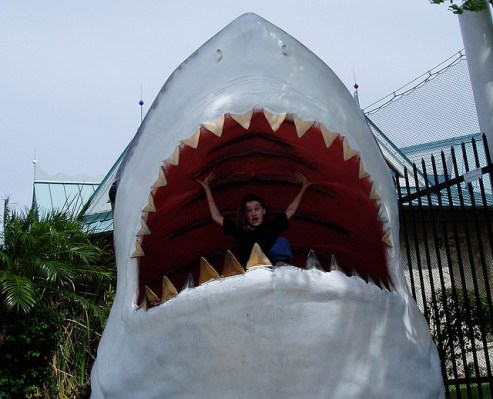“Center For Digital Archaeology,” said the banner above one of the startups at the Funders and Founders Life 3.0 demo show, and for a moment I got excited, thinking of Vernor Vinge‘s software archaeologists. It wasn’t quite that. Instead, Codifi was a “solution for turning cultural heritage datasets and rich media into web- and mobile-ready interactive experiences.”
Which is cool, and worthwhile, but more a niche market than a world-shaker. As were a lot of the startups there. TennisRound: “find a tennis partner.” DreamBoard: an app for dream tracking and analysis. Plus the usual panoply of social marketplaces, socialsourced services, gamified giving, “Instagram for Products,” etc etc yadda yadda.
I apologize for being jaded. Michael Church’s scathing essay “Don’t waste your time in crappy startup jobs“–go read it–was still ringing in my ears, and I couldn’t help but wonder how many of these startups were founded more for the sake of founding a startup than because the founders had an idea that wouldn’t let them go.
But then I thought: I bet Marc “Software Is Eating The World” Andreessen would interpret all this very differently. And who am I to gainsay him?
I suspect he would argue that software is spreading, metastasizing, from its ‘usual’ domains, and beginning to infect, devour, and remake every aspect–and every niche–of human life. Tennis, dreams, laundry, you name it. That’s why he just invested $100 million in Github; because every human being and organization will be an indirect Github user before long, whether they know it or not. In the short term, Church may be right, most startups are dead ends–but in the long run, Andreessen has him beat cold.
And there were some genuinely interesting startups at Life 3.0. My favorite was MapsWithMe, not least because I’ve implemented (relatively crude) offline mapping in Android/iOS apps myself, so I have some idea of the size of the technical difficulties they’ve surmounted. Now you too can have a full-scale offline OpenStreetMap of the entire world on your phone or tablet, if you’re willing to sacrifice 8Gb of storage. What they offer is significantly better than Google Maps offline, no mean feat for a tiny company from Belarus–and they’re planning to offer an API and SDK to other developers soon.
I also really liked Coaster, “Uber for drinks”, which aims to save you time previously wasted waiting at the bar, and getArtup, which is so brilliantly simple – a subscription service to rent art from contemporary local artists, for businesses and wealthy individuals – that I can’t believe no one else has already cornered the market.
But the company that intrigued me the most was quite different. It had the terrible name SmogFarm. It was in a field–social-media sentiment measurement–that already seems crowded. But it seemed on first acquaintance to be more algorithmic, testable, and scientific than its competitors. More to the point, it was trying to do something new, something that has only recently been made even remotely possible; in this case, measuring the overall emotional state of the entire city of San Francisco. (Clarification: the charts I was shown were for SF, but they track the entire English-speaking world.) Who’s the market? I don’t know. What can you do with it? I’m not sure. Does it even really work? Good question. But it was a reassuring reminder that software isn’t just devouring the world we already know. From time to time, it may also open up new worlds to discover.
Image credit: Spring Dew, Flickr.
